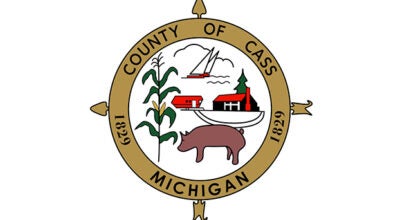Lecture highlights reality, legend of zombies
Published 6:12 pm Thursday, October 18, 2012

Columbia College Associate Professor of English Brendan Riley, nicknamed “zombie dude,” speaks about three types of zombies that can be found in history, literature and pop culture during the second lecture of Southwestern Michigan College’s fall lecture series Thursday. Leader photo/ALY GIBSON
In the second segment of Southwestern Michigan College’s fall lecture series, students, staff and community members got a chance to pick up some vital survival skills in the event of a zombie apocalypse or, more realistically, a bad zombie film.
Zombie scholar Brendan Riley, associate professor of English at Columbia College in Chicago, also nicknamed the “zombie dude,” presented “Zombies and You: Why You Should Care about the Living Dead” Thursday afternoon on Dowagiac’s campus. Described as a “devastatingly awesome lecture,” Riley highlighted the history of zombies and their place in popular culture. Riley serves as a member of the advisory board for the Zombie Research Society and teaches one of Columbia College’s most popular classes, Zombies and Popular Media. Riley said the lecture was to not only educate people on where zombies originated, but also to detail how they appear in film, literature and other media.
“Ultimately, only one out of three of you will survive,” Riley told the audience. “So you want to be prepared.”
According to Riley, three main types include voodoo zombies, which originated in Haiti in the 1920s, Hollywood zombies, which became popular in the last 1960s, and then, philosophical zombies, which take a deeper look at the human condition.
The Haitian voodoo zombies are responsible, Riley said, for inspiring zombies in pop culture.
“It was a moment of imagination for the country,” Riley said. “It captures the mind of Hollywood, they start appearing in film and they start being seen as terrifying.”
From there, early zombie films highlight traits of exoticism, colonialism and racism from the Haitian culture. The first, most notable zombie film Riley recognized was “Night of the Living Dead,” which debuted in 1968.
“It transplants out of the Caribbean and puts it in Pennsylvania,” Riley said. “They’re out of control and trying to eat us. They’re still slow, still mindless … but now they’re hungry.”
Riley said the film touched on topics such as conformity, “a fear of being like everyone else.” As more and more films are produced, many viewers start thinking survival and what they would do in the event of a zombie apocalypse.
“It’s not pleasant to think about, but it becomes interesting,” Riley said.
During a question-and-answer portion after the presentation, Riley explained many people fail to realize that even if a zombie-like apocalypse were to take over the world, many survivors wouldn’t die at the mangled, oozing hands of a zombie.
“Most of us would die from lack of sanitation, lack of water and food,” Riley said. “We’d lose those things we get normally without thinking.”
One question from a student asked Riley what he thought the best weapons would be to defend themselves against zombies, to which Riley replied, “a crowbar, a pistol you’re familiar with, a machete or a bow and arrow.”
“Remember to destroy the brain, people,” Riley said.
The last segment of the fall lecture series is scheduled for 2 p.m. Nov. 8 in the theater of the Dale A. Lyons Building.






